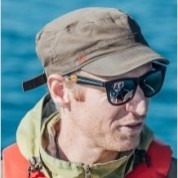University of Exeter

Dr Jamie Shutler
Bio
Jamie Shutler is an Associate Professor at the University of Exeter, UK. He is an oceanographer and engineer with a wide range of interests that exploit in situ observations, remote sensing, satellite Earth observation and models to study and monitor land-water-atmosphere interactions and environment, particularly in relation to climate and water quality. This includes studying atmosphere-ocean gas exchange of climatically important gases, evaluating the quality of model and Earth observation data, developing novel approaches for water quality monitoring of bathing waters and aquaculture sites and land-water interactions in fresh water reservoirs. He has also published research on developing and exploiting computer vision techniques for biometrics (human gait), medical imaging (breast cancer) and surface ocean currents.
His research has been featured in the Guardian Environment, BBC news, Al Jazeera TV, contributed to UK parliamentary enquiries (Ocean Acidification, 2017; Sustainable Seas, 2018) and guided international and inter-governmental agencies. His research team (JamieLab) currently comprises 1 post-doctoral researcher, 1 post-graduate research assistant and 7 PhD students. All of his research software is open-source and free to use.
Publications
Project
RP12: UAVs or aerial drones for autonomous sensor deployment and spatial water quality observations (ESR12, EXT)
The need to deploy sensors in environments unsuitable or inaccessible to humans, such as hot springs or contaminated lakes, requires a remote deployment method where the user is not exposed to the conditions experienced by the sensor. To overcome these challenges, ESR 12 will developed strategies similar to RP11, but this time with UAVs. The goal is to explore the potential of lightweight drones for deploying small automated sensor technologies and collecting water samples (for later laboratory analysis) in environments unsuitable or inaccessible to humans. ESR12 will also explore the range of possibilities and accuracy of remote sensing water quality parameters from lightweight drones. Water quality parameters, including total suspended matter and turbidity, can be observed using optical remote sensing. Therefore, a drone carrying an optically characterised and fully controlled digital camera will be used to map the spatial variations in these water quality parameters. Further, the use of drones to deploy light-weight sensorized buoys developed in RP9 will be explored for the first time. In the first instance, the buoys will be simply dropped in water. This will be followed by complex task such as picking buoys from one place and dropping it at other desired location.

